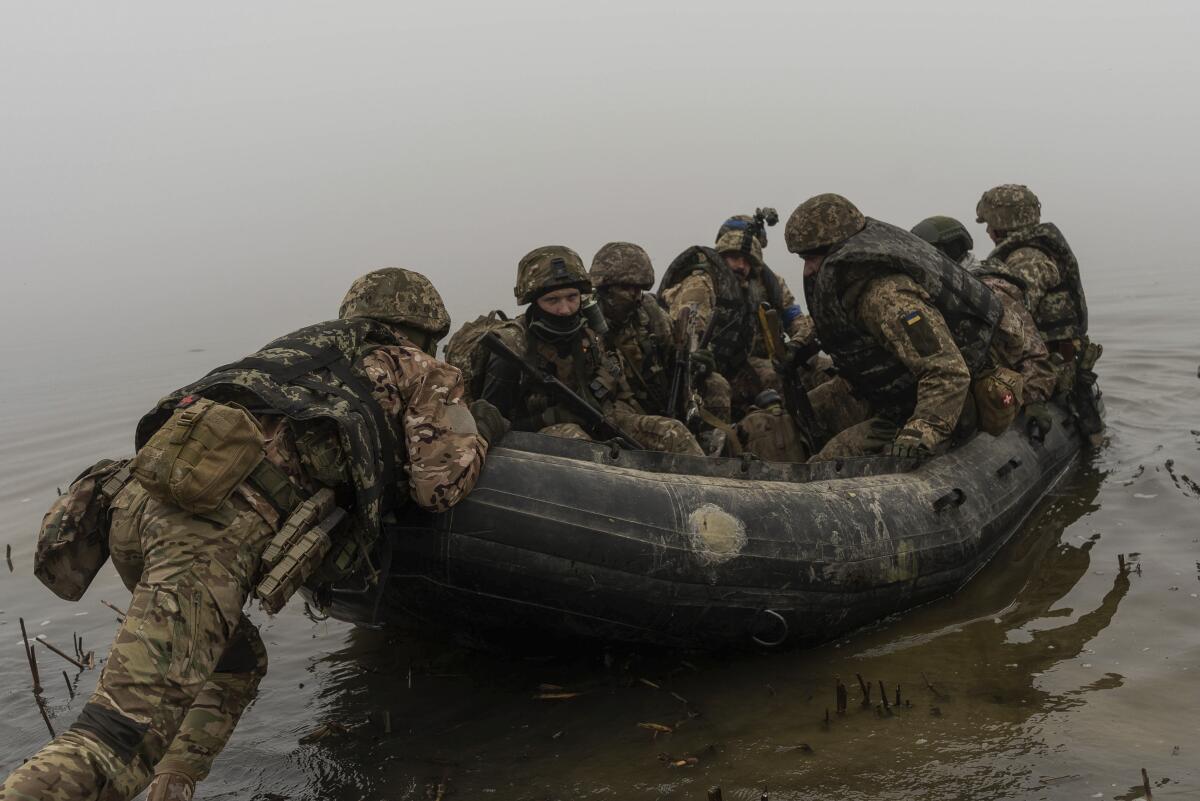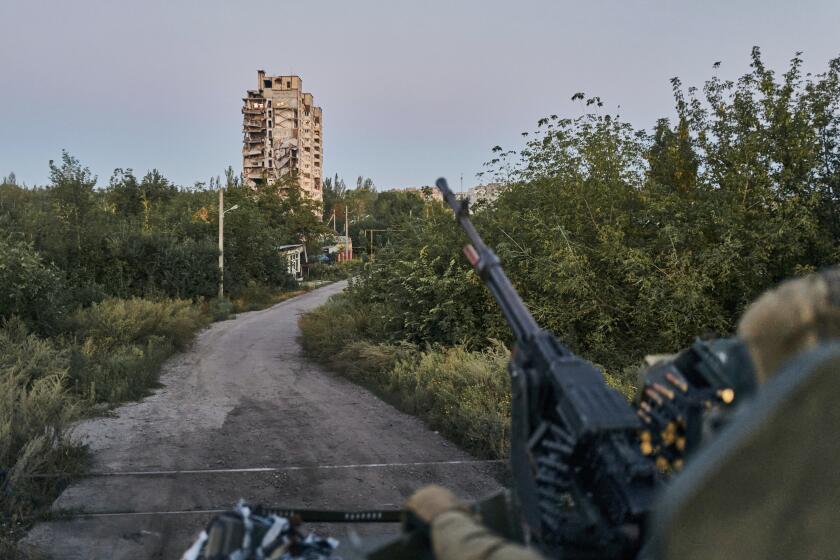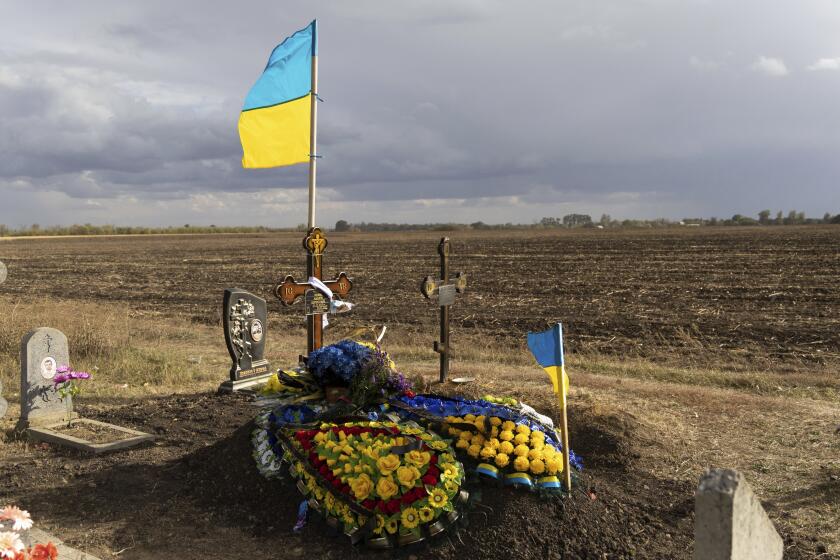Ukraine and Russia assess their resources as war heads into a second winter

- Share via
KYIV, Ukraine — Ukraine President Volodymyr Zelensky said he spoke by phone with President Biden about Washington’s future support for Kyiv, and Russian President Vladimir Putin visited a military base near the Ukrainian border, as the warring countries laid plans for the winter and next year’s combat operations.
Almost 20 months of war have sapped both sides’ military resources. The fighting is likely to settle into positional and attritional warfare during the approaching wintry weather, analysts say, with little change along the more than 600-mile front line.
Zelensky said late Thursday that he spoke to Biden about “a significant support package” for Ukraine. Western help has been crucial to Ukraine’s war effort. Biden announced an aid package Friday in which he is asking Congress for $61.4 billion for Ukraine, among other items.
Kremlin spokesman Dmitry Peskov said the latest U.S. pledges to back Ukraine would bear no fruit in the war.
“Mr. Biden hasn’t mentioned that all those efforts to deter Russia have proven inefficient,” he said. “They will remain inefficient in the future.”
Zelensky also spoke Friday with German Chancellor Olaf Scholz, who “reasserted [Germany’s] sustained and steadfast solidarity with Ukraine,” according to the German government.
Russia is throwing more units into its effort to take a key eastern Ukraine city after apparent setbacks that have slowed its onslaught, analysts say.
Putin late Thursday visited the headquarters of Russia’s Southern Military District, less than 60 miles from Ukraine’s southeastern border, where he was briefed on the war by the chief of the General Staff, Valery Gerasimov, the Kremlin said.
With uncertainty over the scale of Kyiv’s future Western aid, and after Ukraine’s five-month counteroffensive sapped Russian reserves but apparently only dented Russian front-line defenses, the two sides are scrambling to replenish their stockpiles for 2024.
Ukraine has been expending ammunition at a rate of more than 200,000 rounds per month, according to Jack Watling, a senior research fellow at the Royal United Services Institute think tank in London.
“Sufficient ammunition to sustain this rate of fire is not going to be forthcoming as NATO stockpiles deplete, and production rates for ammunition remain too low to meet this level of demand,” Watling wrote in an assessment published late Thursday.
Both Republicans and Democrats should be backing both nations. They’re flawed but decent democracies whose enemies seek to erase them from the map.
Meanwhile, Russian production “has turned a corner,” he said. Moscow’s domestic ammunition production is growing quickly, at more than 100 long-range missiles a month, compared with 40 a month a year ago, for example, according to Watling.
Also, Russia is reported to be receiving supplies from Iran, North Korea and other countries.
Though Ukraine’s counteroffensive has not made dramatic progress against Russia’s formidable defenses, it has suppressed the Kremlin’s forces, and Kyiv is looking to keep up the pressure.
That will help tax Russia’s manpower resources, which are already under strain, according to the Institute for the Study of War, a Washington think tank.
It said in its latest assessment that “Russian forces largely lack high-quality reserves and are struggling to generate, train and soundly deploy reserves to effectively plug holes in the front line and pursue offensive operations.”
More to Read
Sign up for Essential California
The most important California stories and recommendations in your inbox every morning.
You may occasionally receive promotional content from the Los Angeles Times.












